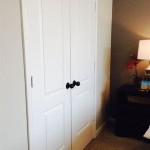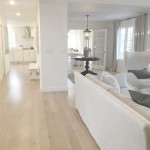What Color Should I Paint My House Interior?
Choosing the right paint colors for your home's interior is a significant decision that can impact the overall atmosphere and ambiance of your living spaces. It's a project that requires careful consideration as the wrong color choices can lead to a feeling of discomfort or unhappiness. However, with thoughtful planning and an awareness of the psychological effects of color, you can create a home that is both aesthetically pleasing and conducive to well-being.
Understanding the Psychology of Color
Before diving into specific color palettes, it's essential to understand the psychological associations and effects of different colors. Colors evoke emotions and can influence mood, energy levels, and even appetite. For example, cool colors like blue and green are often associated with calmness and tranquility, while warm colors like red and yellow evoke feelings of excitement and energy.
Here's a quick overview of some common color associations:
- Red: Energy, passion, excitement, appetite stimulation
- Orange: Creativity, enthusiasm, warmth, optimism
- Yellow: Happiness, optimism, intellect, clarity
- Green: Nature, growth, tranquility, harmony
- Blue: Calmness, serenity, trust, communication
- Purple: Luxury, creativity, spirituality, mystery
- White: Cleanliness, simplicity, spaciousness, peace
- Black: Sophistication, elegance, power, mystery
By considering these associations, you can begin to understand how different colors might affect the mood and atmosphere of your home.
Factors to Consider When Choosing Interior Paint Colors
Beyond the psychological aspects, several practical factors should be considered when selecting interior paint colors:
Room Function
The intended use of a room plays a significant role in color selection. For example, a bedroom should foster relaxation and sleep, making calming colors like blues and greens ideal. A home office might benefit from more stimulating colors like yellow or orange to promote focus and productivity. A dining room could benefit from warm colors like red or orange to encourage conversation and appetite.
Natural Light
The amount of natural light a room receives directly impacts how colors appear. Rooms with abundant natural light can handle darker, bolder colors, while rooms with limited natural light might require lighter, brighter shades to avoid feeling gloomy.
Furniture and Decor
The existing furniture and decor in a room should be considered when choosing paint colors. It's essential to create a cohesive and harmonious look by selecting colors that complement existing pieces. You can either choose colors that match or contrast with your furniture, creating a desired effect.
Personal Preferences
Ultimately, the most critical factor in choosing paint colors is personal preference. While the psychology of color and practical considerations can provide guidance, your aesthetic tastes should be the final deciding factor.
Color Palette Ideas for Different Rooms
Once you've considered the psychological associations and practical factors, you can begin exploring specific color palettes for different rooms. Here are a few ideas to get you started:
Living Room
For a living room that promotes relaxation and warmth, consider using a neutral base color like beige or grey, accented with pops of color from throw pillows, artwork, or rugs. Soft blues, greens, or warm yellows can create a welcoming atmosphere.
Bedroom
For a bedroom that fosters sleep and relaxation, calming colors like blues, greens, or lavender are ideal. A light grey or off-white can create a sense of tranquility and spaciousness.
Kitchen
Kitchens benefit from colors that stimulate appetite and create a cheerful atmosphere. Consider warm yellows, oranges, or reds for a vibrant and energetic feel. However, avoid using red exclusively, as it can trigger feelings of aggression and tension.
Bathroom
Bathrooms are often associated with relaxation and cleanliness. Calming colors like blues, greens, or light grays are appropriate. Soft blues and greens create a spa-like atmosphere, while light grays can enhance a sense of spaciousness in smaller bathrooms.
Remember, these are just suggestions. Exploring different color palettes and experimenting with samples is crucial to finding the perfect combination for your home.

14 Popular Paint Colors For Small Rooms Life At Home Trulia Blog

Lake House Interior Colors The Lilypad Cottage

20 Of The Best Paint Colors For Whole House Welsh Design Studio

What Are The Best Paint Colors For Ing Your House Living Room Home

Best Interior Paint Colors Whole House Color Scheme Abby Organizes

What Color Should I Paint My House For Re San Francisco Painting Tips Interior Home Inside

Interior Paint Colors From My Home Salvaged Living

20 Of The Best Paint Colors For Whole House Welsh Design Studio

All The Paint Colors In Our Home House Of Silver Lining

What Color Should I Paint My Room Interior Painting Tips Ag Williams
Related Posts








